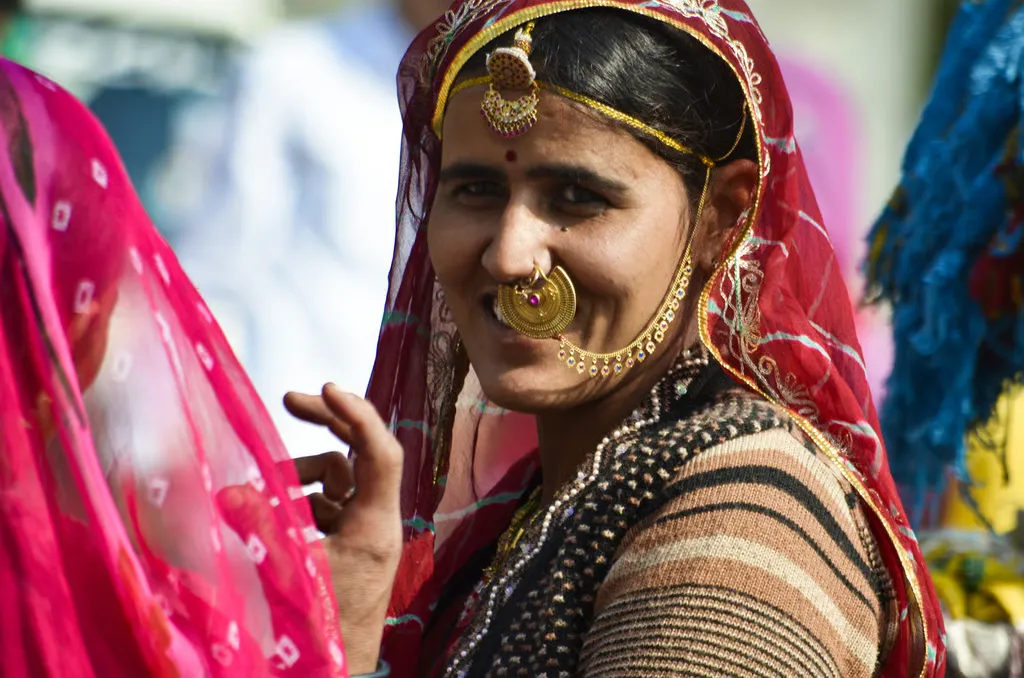Bishnoi Village Safari – Explore Rural Culture & Wildlife Near Jodhpur

Bishnoi Community Overview When 363 members of the Bishnoi community sacrificed their lives to protect Khejri trees (Prosopis cineraria) in 1730, they likely organized India’s first environmental movement. The Bishnoi is a religious community centered primarily in the Great Indian Desert or Thar Desert with a centuries-long legacy of practicing environmental conservation, wildlife protection, and sustainable resource management. It traces its roots of ecological consciousness and environmentalism back to the teachings of its fifteenth-century guru, Maharaja Jambheshwar, popularly known as Jambhoji. According to legend, in 1485, Saint Guru Maharaja Jambheshwar founded the Bishnoi sect of Hinduism in Marwar region of Rajasthan, India. Although the Bishnoi are today recognized as a subsect of Hinduism, they were recorded as Muslims until the 1891 Census of Marwar. While some scholars classify the Bishnoi as a liminal community because they practice both Hindu and Muslim rites, others consider them to be neither Hindu nor Muslim. The name “Bishnoi” derives from Hindi language, in which “Bish” translates to twenty and “Noi” translates to nine; it alludes to the original 29 edicts of Guru Jambhoji, which decreed how to live harmoniously with nature in the harsh climatic conditions of the Thar Desert. Notable among these edicts were the following: “do not cut green trees” and “be compassionate toward all living beings.” Jambhoji’s teachings specifically emphasized the protection of nature and wildlife because, as legend holds, earlier in his life, he had experienced severe droughts with tragic consequences for humans and animals alike. His logic was that if trees were protected, then the animals and people who depended on them would be protected in turn. Followers adhered to these principles even in times of crisis. In 1730, when Maharaja Abhay Singh, the ruler of Jodhpur, needed timber to construct the new royal palace, he sent soldiers to the Bishnoi village of Khejarli with orders to fell numerous Khejri trees—which have been sacred in Bishnoi culture. On 11 September 1730, Giridhar Bandhari, a representative of Maharaja Abhay Singh, arrived in Khejarli to fell the trees. When Amrita Devi Bishnoi, a resident of the village, was alerted to the threat, she and her daughters attempted to prevent the soldiers from cutting down the trees by hugging them while proclaiming: सर सटे रुख रहे तो भी सस्तो जान If a tree is saved even at the cost of one’s head, it is worth it. In an effort to prevent their own trees from being cut down, the nearby Bishnoi villagers followed Amrita Devi’s example and embraced the Khejri trees in the area. The soldiers ignored the residents’ pleas, and 363 Bishnoi were killed, including Amrita Devi and her daughters. When the Maharaja learned of the massacre, he immediately ordered the woodcutting operation to be halted and apologized for the deaths. He also granted complete state protection to the Bishnoi villages of the region—this is no longer applicable today, but the nonhuman nature in the area is now protected by various legislations of the Indian government. In addition, the king issued a royal decree on a copper plate, prohibiting cutting trees and hunting animals within and around all Bishnoi villages. To honor the legacy of the Bishnoi’s sacrifice, the government of India established the Amrita Devi Wildlife Protection Award (ADWPA) in 2000, and 11 September was designated National Forest Martyrs Day in 2013. Today, the Bishnoi community faces multiple environmental pressures: deforestation and biodiversity loss, depleting groundwater levels, aggressive mining activities, illegal poaching, and developmental land-grabbing. Despite these challenging conditions, the Bishnoi successfully manage their own forest in the Thar and work to maintain wild-animal populations through the use of traditional ecological knowledge and customary laws based on their religious beliefs. In line with Jambhoji’s teachings, the Bishnoi seek only to extract resources from nature as needed, as we found in a 2022–2023 primary ethnographic field survey among members of the Bishnoi community and nongovernmental organizations in Khejarli, Jajiwal, and Gharab of Jodhpur, Rajasthan. Specifically, they collect the leaves and pods of Khejri trees for vegetable and traditional medicinal uses. Besides, leaves are used as fodder for domestic animals such as goats, sheep, and camels. The Bishnoi people run community-based animal care centers to nurse injured, sick, and weak animals. Sometimes, Bishnoi women breastfeed injured fawn. Additionally, they practice community-driven monitoring systems to regulate deforestation activities and plant Khejri trees as a measure to safeguard against desertification. Further, they preserve community-managed sacred groves to protect sacred trees, sacred animals, and water; the rich biodiversity of these groves provides water in times of crisis. The harmonious relationship between the wildlife and people is visible in every Bishnoi village, with many wild animals (blackbucks, Indian gazelles, chinkaras, peacocks, great Indian bustards, partridges) freely roaming the area. The primary field survey also revealed that Bishnoi villages have significantly higher natural vegetation cover and wildlife population compared to parts of the Thar Desert, especially numbers of Khejri trees and blackbucks. The Bishnoi might not be able to influence the dominant religious and environmental discourse beyond the Thar Desert, but their doctrine preaches the virtues of environmental conservation and wildlife protection and is being passed down within the community from the older to younger generations. The Bishnoi community’s religious value-based natural-resource-management strategy significantly contributes to sustainably managing natural resources in their region. About Bishnoi Village One of the main tourist attractions in Rajasthan is the Bishnoi Village. Although 22kms from the Jodhpur city, the city houses a Hindu religious sect – the Bishnois. They get their name from Bishnoi, meaning 29, and representing the 29 principles the villagers live by. Out of these 29 principles, ten pertain to personal hygiene and good health, seven to healthy and communal social behaviour. Also four to being good devotees of God, and eight to the reservation and care towards the biosphere. The bishnoi village area is replete with wildlife! During your time in the village, you can spot ptaridges, peacocks, the endangered Great Indian Bustard, vultures, blackbuck deers, chinkaras, and many more. Much like the minority Hindu sect, the wildlife
Slow Travel Through The Bishnoi Villages Of Rajasthan

The Bishnoi community lives by 29 strict rules of conduct (bish is 20 and noi is nine), including a ban on felling trees and killing animals. In 1730, Amrita Devi, a Bishnoi woman, laid down her life with several other people from her community, to stop the king’s men from felling kejri trees in their area. They can easily count among India’s first environmentalists. Bishnoi Village The set of 29 principles include several norms related to the protection of animals and the conservation of trees. The Villages To Visit Make a trip down to the Bishnoi village of Khejarli (25 km southeast of Jodhpur), best known as the place where the precedent for the Chipko Movement was established. In 1730, the Maharaja of Jodhpur, Abhay Singh, ordered the cutting down of trees in and around Khejarli for the renovation of the Mehrangarh Fort. In protest, about 360 people, including women, from 84 Bishnoi villages wrapped themselves around the trees, in the hope that they would be able to save them. However, the maharaja’s armies ruthlessly went ahead and cut down the trees, along with the people clinging to them. Three hundred and sixty-three people died at that time and today, 363 trees have been planted around the Jambheshwarji Temple in their memory. They can easily count among India’s first environmentalists. Next, head to the potters’ village of Singhasini and watch potters at work using clay and sawdust as raw materials. Nearby is the shepherds’ village at Rebari and the Bishnoi village of Guda. Here, you can enjoy tea and conversation with the women and the children of the village and take a peek into their mud houses, whose interiors are cool even in the desert heat. There is something to learn from here about living in harmony with one’s surroundings the villagers lives are environment-friendly—they use every scrap of waste, be it to decorate their homes or to make cots. Also visit Guda Lake, a retreat for birds including the sarus and demoiselle cranes. Apart from blackbuck, nilgai and chinkaras, one may also get to see turtles in this area. Kankani village is known for lovely terracotta work and block printing. Here you can see how the block-printed cloth that Jodhpur is so famous for is crafted. Salawas, famous for its dhurries, is an obscurely located village, down a bumpy road that takes you nowhere else. The Information Getting there: The nearest airport and railhead are at Jodhpur. When to go: The best time to visit is from October to March, in the winter season, as the rest of the year witnesses scorching hot weather.